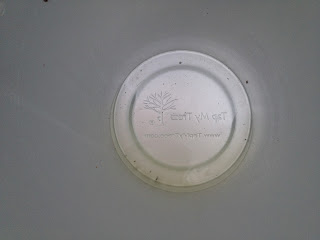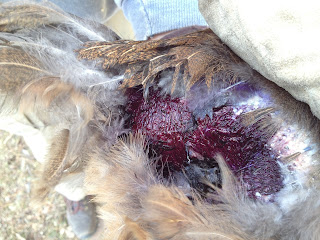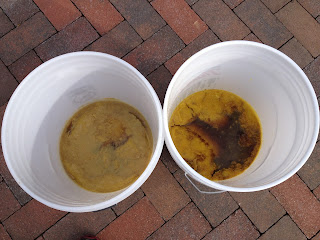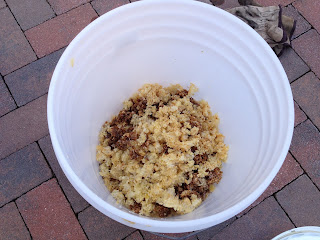Not-So-Mean Martha

Last week we took Lizzy out of solitary confinement and let her back into the henhouse with the rest of the chickens. Her feathers had grown back in nicely, and it didn’t look like she was pecking at herself at all: no purple beak, no feathers on the floor. On the other hand, Rachel still had freshly pecked spots around her vent (that’s the egg hole for you non-farmers), so someone else was causing the damage. Naturally, we suspected Martha, due more to her reputation than to any real evidence. So into the box she went to see if the other chickens would heal without her around. So on Easter morning I went out to check on Martha and Smithy, and was alarmed to see this: There was blood everywhere : I’m not sure that picture quite does justice to the murder-esque scene in there. Here’s a closer look at what we were afraid was going to be a bloody mess of a chest wound: And a bloody mess it was, but not a chest wound. Tiegan came outside he...








